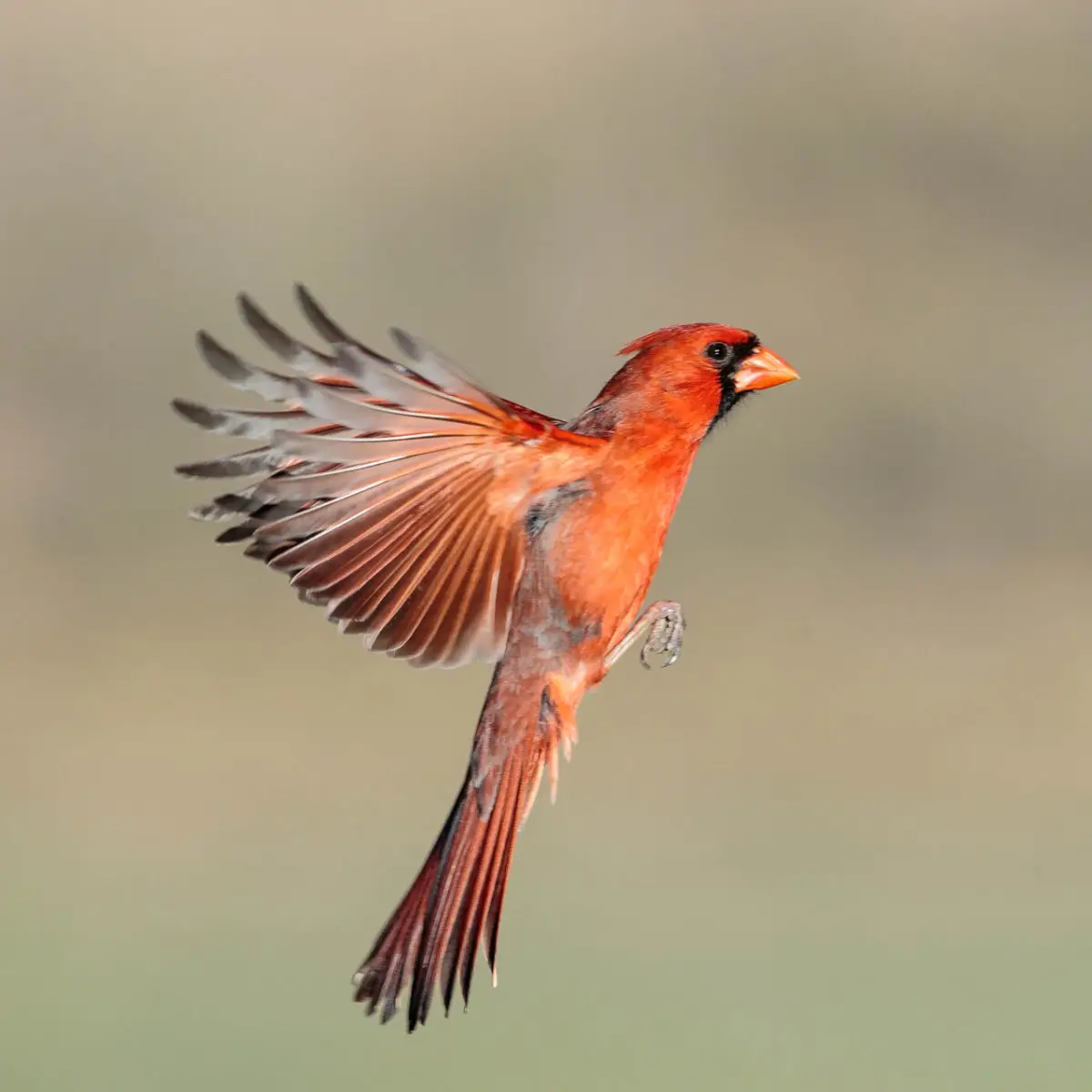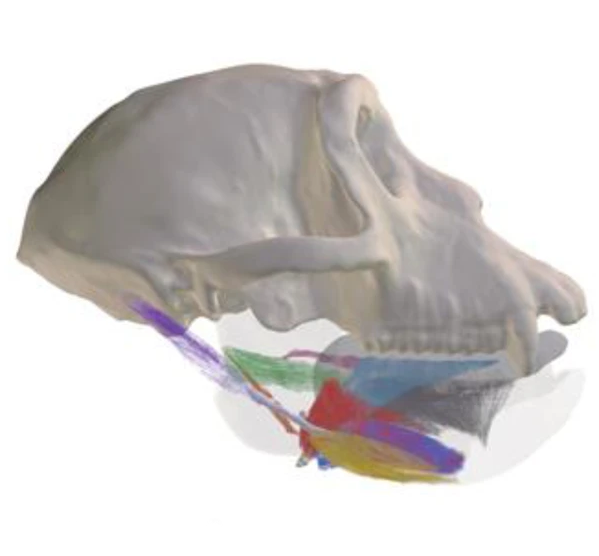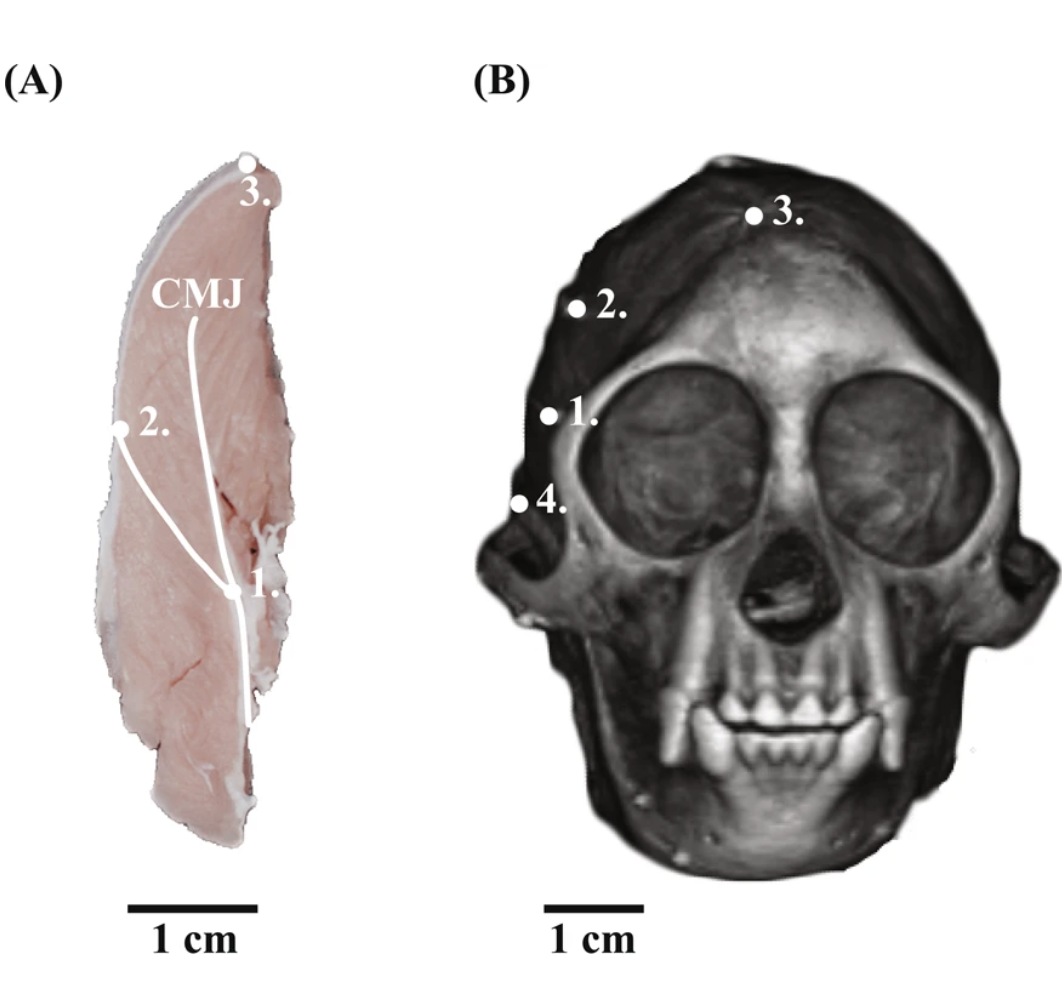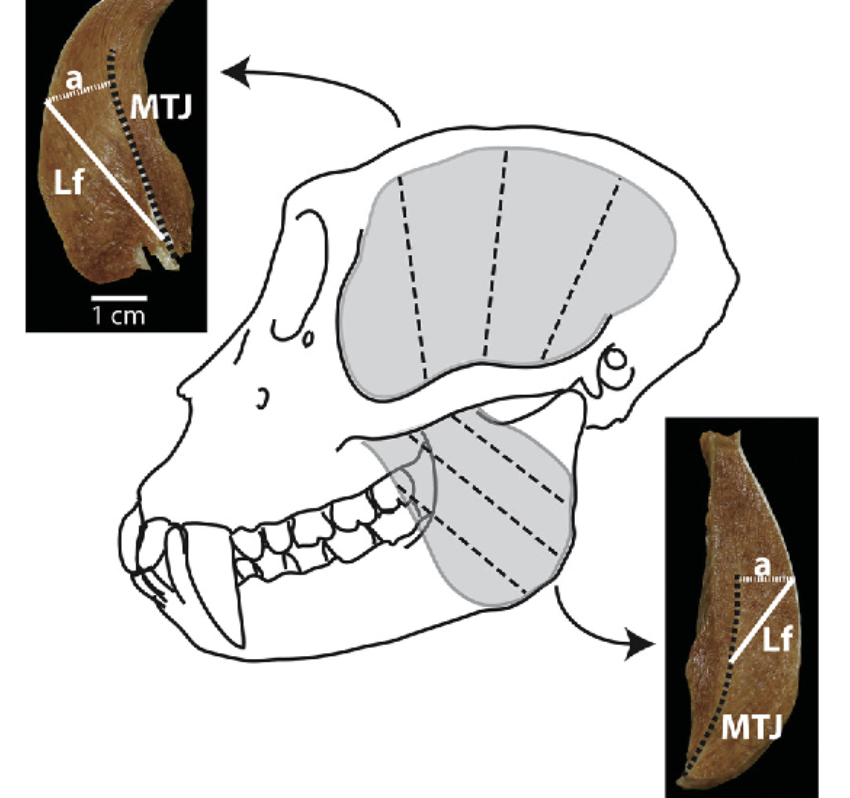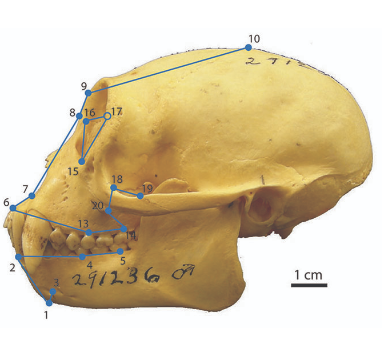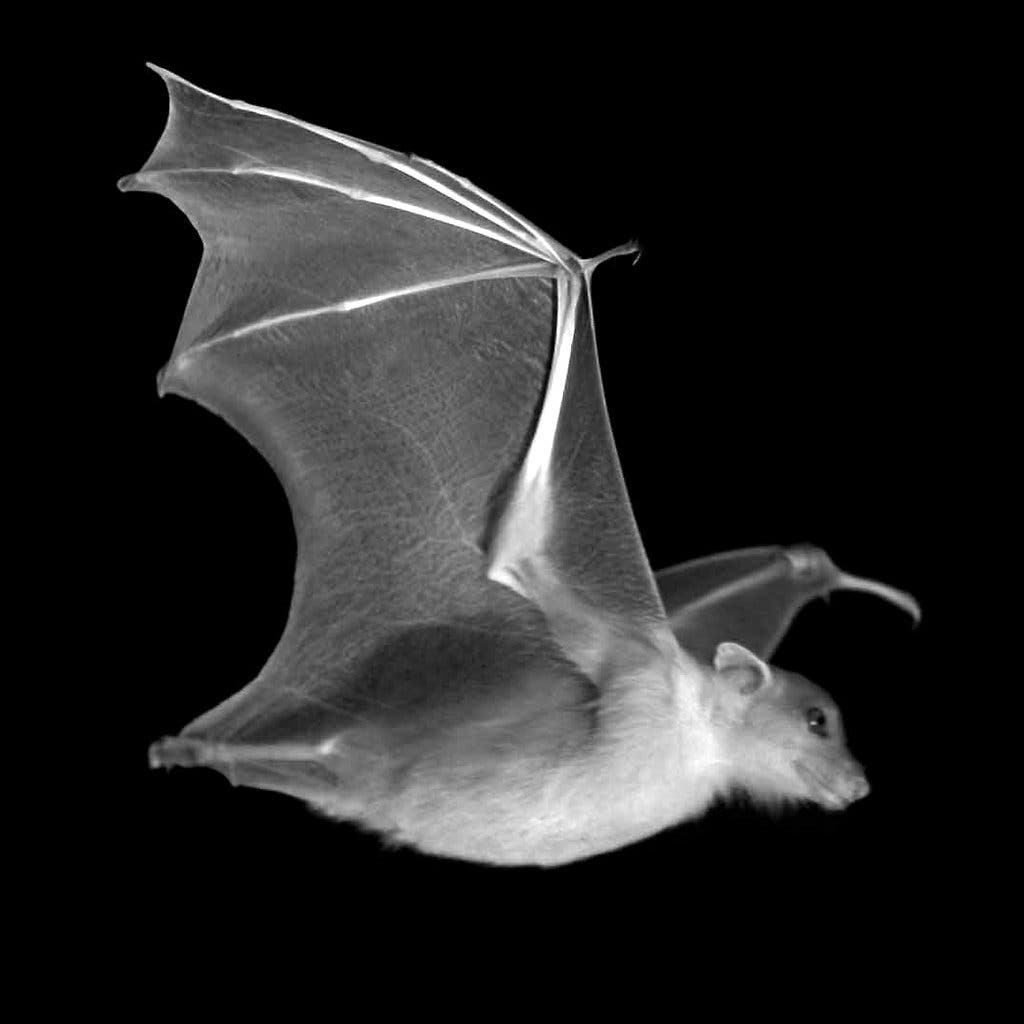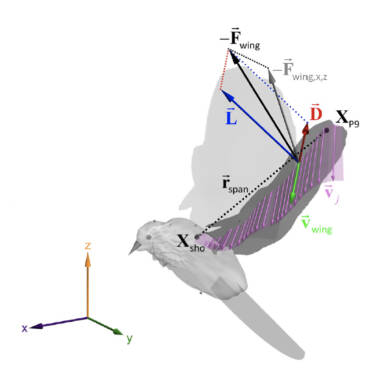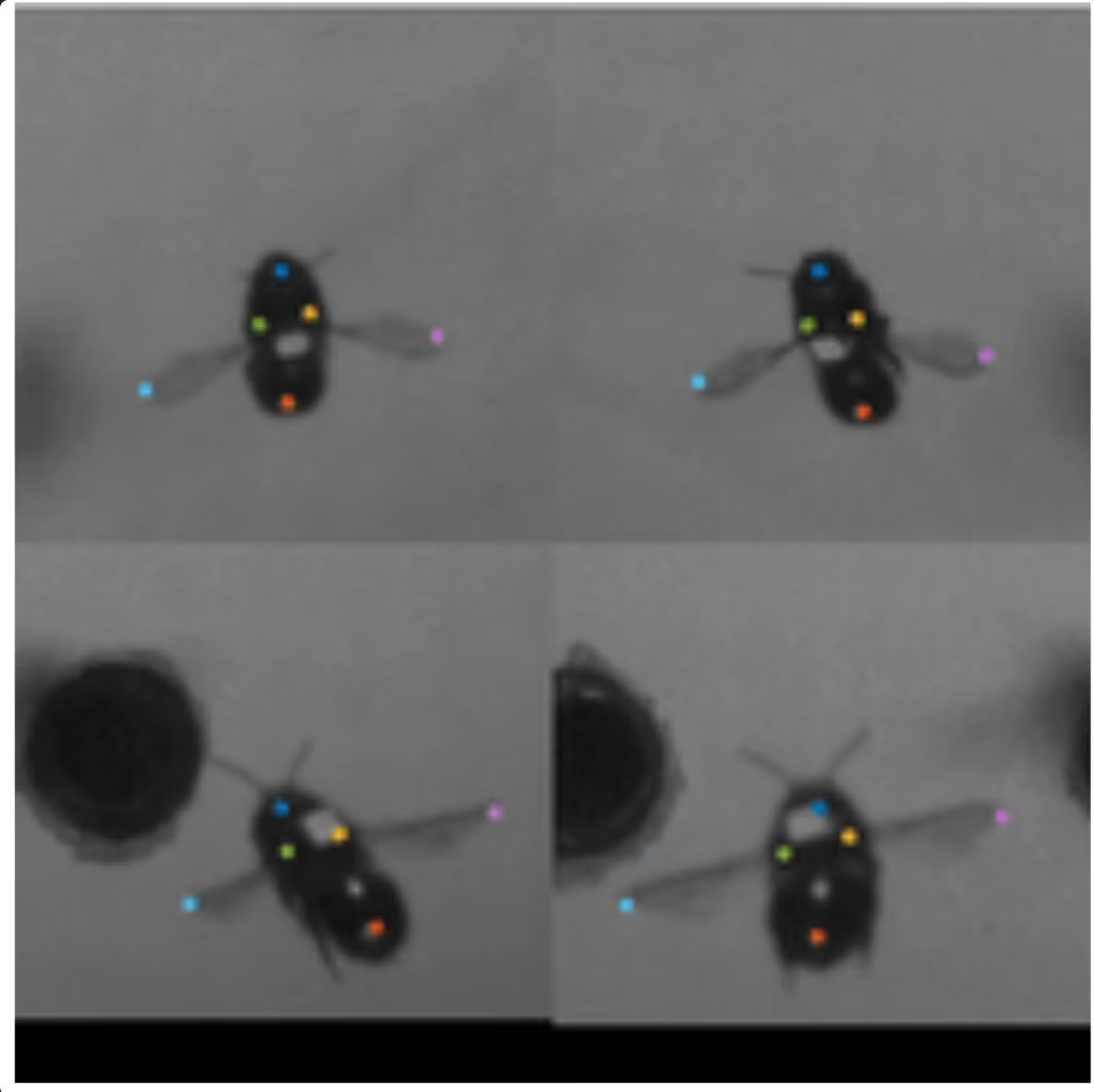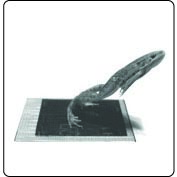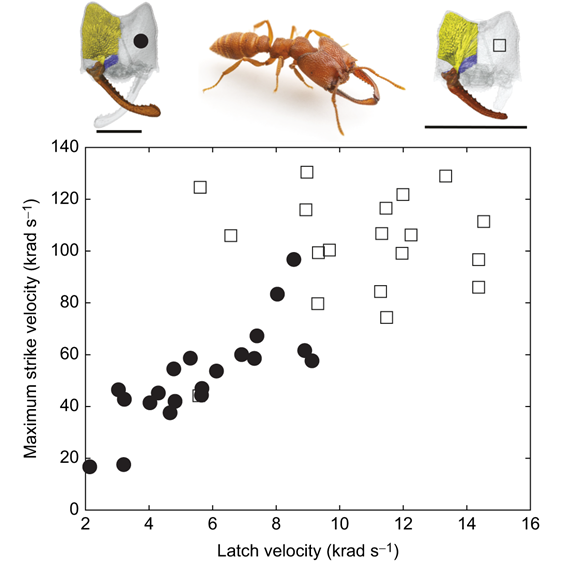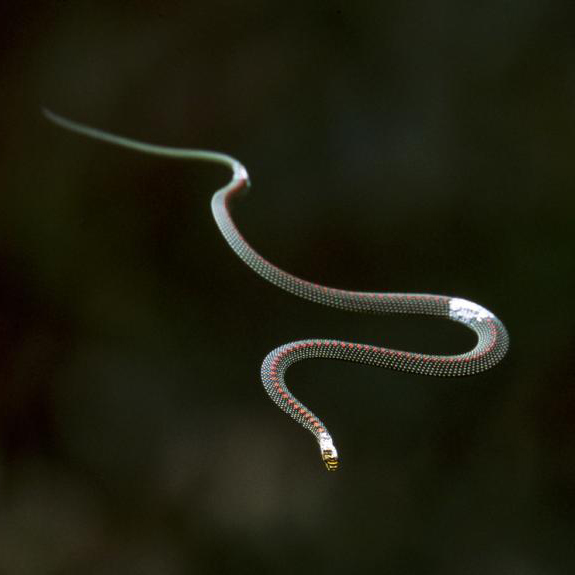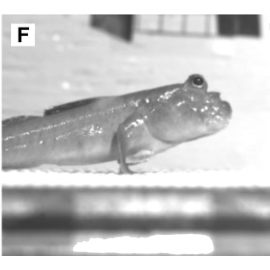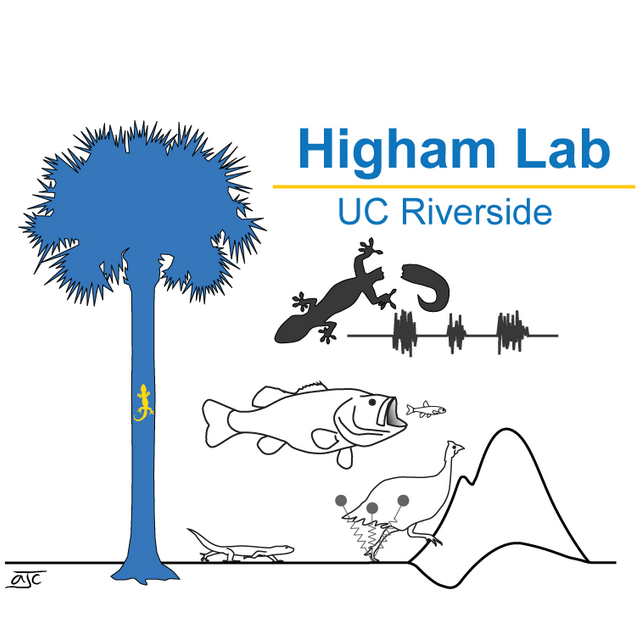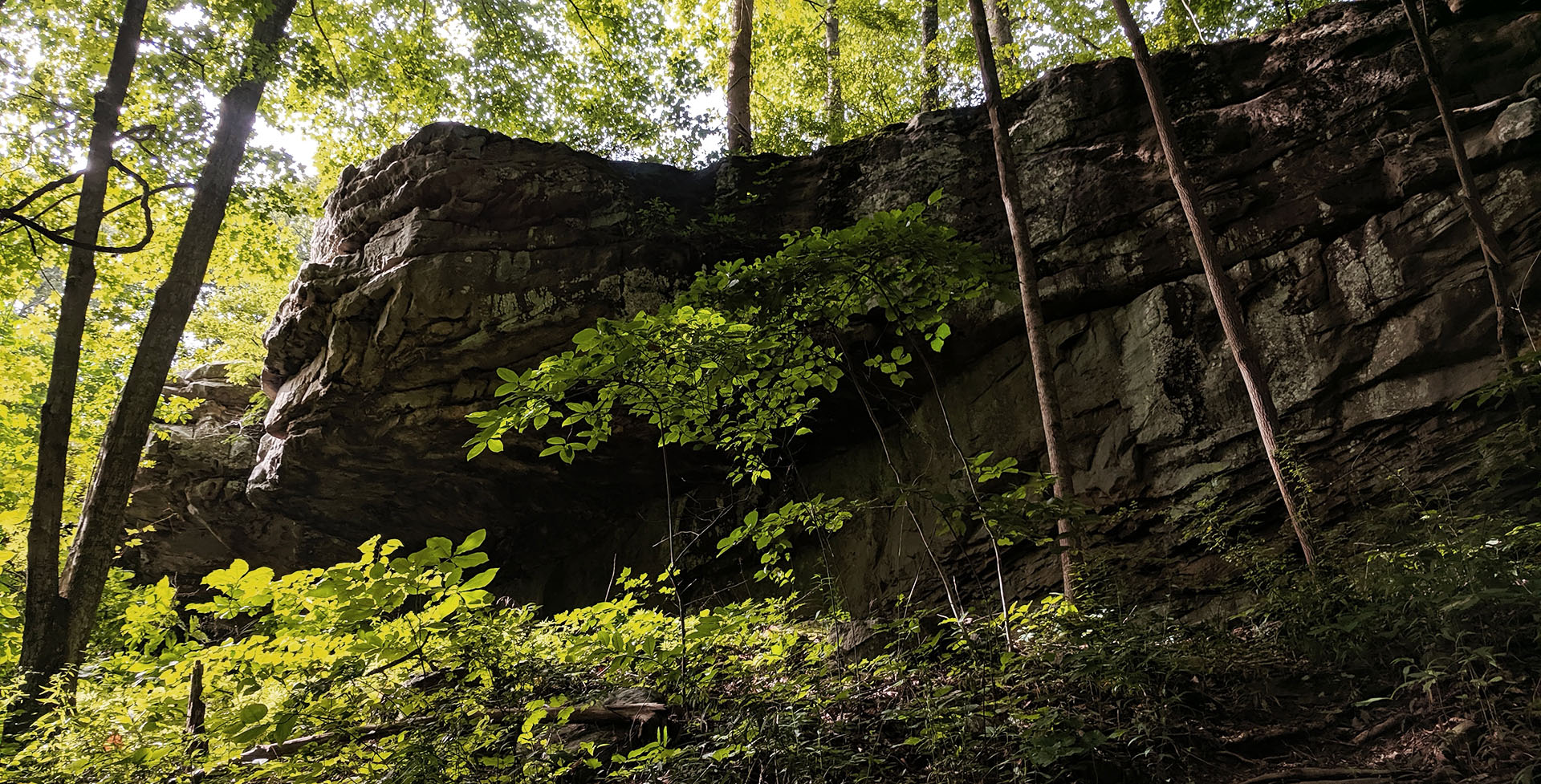
Animal Movement Lab
at Sewanee
About the lab
Our lab studies animal movement from a diversity of perspectives. We are interested in understanding how animals produce and control movement. We use a combination of experimental and computational approaches to understand how the morphology of organisms determines the way they interact with their environment. For example, we are currently looking at how wing shape affects the flight abilities of birds and how the differences in cranial shape affect masticatory performance in mammals.
With its large campus, Sewanee is a great place to investigate what animals can do in nature. Please look around to learn more about what we do in the lab.
Research
The lab is interested in investigating the relantionship between form and function in animals in general. The following are just some projects that we have been working in the last couple of years.
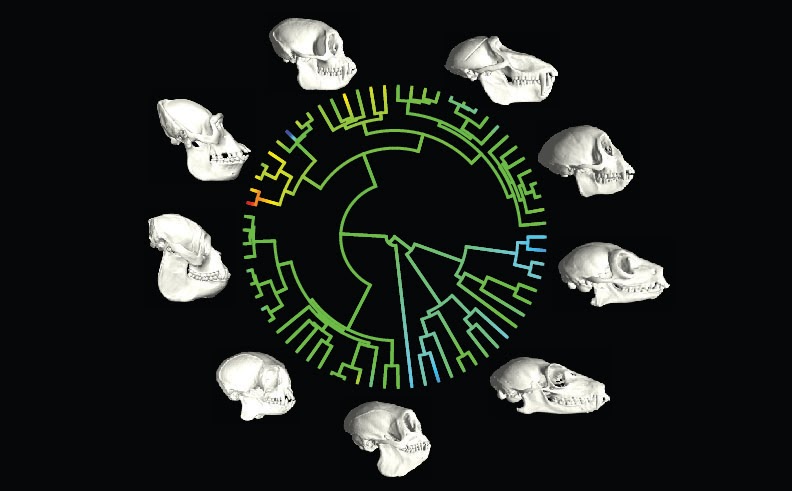
Evolutionary patterns of the feeding system
Vertebrates have evolved complex morphological and physiological traits to cope with changing environments. Overall, We are interested in understanding how variation in morphological traits affects physiological performance from a comparative perspective. In particular, we are investigating the morphological diversity of the cranium in primates and how this diversity affects their ability to produce bite force and access different food sources. We use 3D models of the skull of primates (and mammals in general), to explore how the variation in musculoskeletal morphology, within and across clades and between dietary groups, affects muscle mechanics, and how this determines bite force performance.
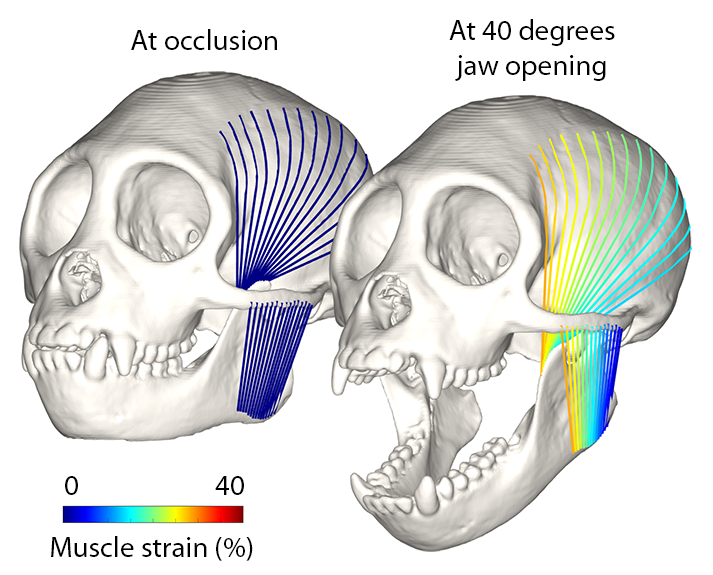
Biomechanics of masticatory muscles
Muscles are incredibly adept at performing under several physiological conditions. Nonetheless, each muscle has an optimum at which it can produce a maximal amount of force. This muscle force decreases as the muscle either lengthens or shortens from this optimal length. As you can see in the image on the left, muscles stretch as the mandible opens. This stretch is, however, not the same across the muscle. Fibers closer to the jaw joint stretch less than fibers farther from the joint. In our research, we use experimental and modeling techniques to evaluate the effect of gape (i.e., the degree of mouth opening) on muscle mechanics and its effect on bite force.
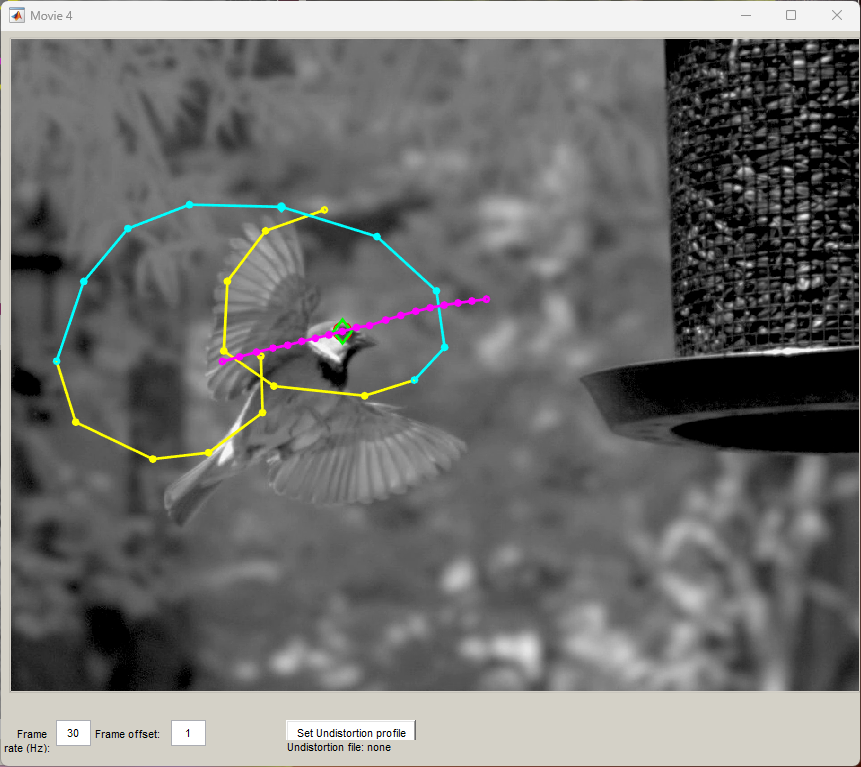
Bird flight
Animals often produce complex movements to move from one place to another. Our lab focuses on how birds produce and control movement, both in the laboratory and in natural environments. We study the biomechanics and behavior of flight in natural environments to explore the suite of behaviors and maneuvers that birds normally employ in their daily routine. We use high-speed imaging to reconstruct the three-dimensional movement of the bodies and wings of birds as they accelerate/decelerate, turn, and avoid obstacles, and how these maneuvers differ between species.
For more information, you can read this story about our research in the summer of 2022 (link).
Publications
2024
Tradeoffs between bite force and gape in Eulemur and Varecia
Journal of Morphology 285: e21699 (2024)
Laird MF, Polvadore TA, Hirschkorn GA, McKinney JC, Ross CF, Taylor AB, Terhune CE & Iriarte-Diaz J
2023
Dynamic finite element modelling of the macaque mandible during a complete mastication gape cycle
Philosophical Transaction of the Royal Society B 378: 20220549 (2023)
Panagiotopoulou O, Robinson D, Iriarte-Diaz J, Ackland D, Taylor AB & Ross CF
Gape drives regional variation in temporalis architectural dynamics in tufted capuchins
Philosophical Transaction of the Royal Society B 378: 20220550 (2023)
Laird MF, Iriarte-Diaz J, CD Byron, Granatosky MC, Taylor AB & Ross CF
Sagittal suture strain in capuchin monkeys (Sapajus and Cebus) during feeding
American Journal of Biological Anthropology 180: 633-654 (2023)
Byron C, Reed D, Iriarte-Diaz J, Wang Q, Strait D, Laird MA & Ross CF
2022
Macaca mulatta is a good model for human mandibular fixation research
Royal Society Open Science 9: 220438 (2022)
Haravu PN, Mehari Abraha H, Shang M, Iriarte-Diaz J, Taylor AB, Reid RR, Ross CF & Panagiotopoulou O
Fracture fixation technique and chewing side impact jaw mechanics in mandible fracture repair
JBMR Plus 6: e10559 (2022)
Mehari Abraha H, Iriarte-Diaz J, Reid RR, Ross CF & Panagiotopoulou O
2021
Arackar licanantay gen. et sp. nov. a new lithostrotian (Dinosauria, Sauropoda) from the Upper Cretaceous of the Atacama Region, northern Chile
Cretaceous Research 124: 104802 (2021)
Rubilar-Rogers D, Vargas AO, Gonzalez Riga B, Soto-Acuña S, Alarcon-Muñoz J, Iriarte-Diaz J, Arevalo C & Gutstein CS
2020
Functionally engineered extracellular vesicles improve bone regeneration
Acta Biomaterialia 109: 182-194 (2020)
Huang CC, Kang M, Narayanan R, Lu Y, Shirazi S, Iriarte-Diaz J, Cooper LF, Gajendrareddy P & Ravindran S
Biomechanics of the mandible of Macaca mulatta during the power stroke of mastication: Loading, deformation, and strain regimes and the impact of food type
Journal of Human Evolution 147: 102865 (2020)
Panagiotopoulou O, Iriarte-Diaz J, Mehari Abraha H, Taylor AB, Wilshin S, Dechow PC & Ross CF
*Correction to the paper (link)
Temporomandibular joint hypofunction secondary to unilateral partial discectomy attenuates degeneration in murine mandibular condylar cartilage
Bulletin of the Tokyo Dental College 61: 9-19 (2020)
Yotsuya M, Iriarte-Diaz J & Reed DA
2019
The mechanical effect of the periodontal ligament on bone strain regimes in a validated finite element model of a macaque mandible
Frontiers in Bioengineering 7: 269 (2019)
Mehari Abraha H, Iriarte-Diaz J, Ross CF, Taylor AB & Panagiotopoulou O
Joint angular excursions during cyclical behaviors differ between tetrapod feeding and locomotor systems
Journal of Experimental Biology 222: jeb200451 (2019)
Granatowsky M, McElroy E, Laird M, Iriarte-Diaz J, Reilly S, Taylor AB & Ross CF
Constraints and optimality in primate feeding systems
In Feeding in Vertebrates: Anatomy, Biomechanics, Evolution (V Bels & IQ Whishaw, eds.). pp. 787-829. Springer (2019)
Ross CF & Iriarte-Diaz J
Dynamics of motor cortical activity during naturalistic feeding behavior
Journal of Neural Engineering 16: 026038 (2019)
Liu S, Iriarte-Diaz J, Hatsopoulos NG, Ross CF, Takahashi K & Chen Z
2017
Editorial: Determinants of mammalian feeding system design
Zoology 124: 1-2 (2017)
Iriarte-Diaz J & Panagiotopoulou O
In vivo bone strain and finite element modeling of a rhesus macaque mandible during mastication
Zoology 124: 13-29 (2017)
Panagiotopoulou O, Iriarte-Diaz J, Wilshin S, Dechow PC, Taylor AB, Mehari Abraha H, Aljunid SF & Ross CF
Functional correlates of the position of the axis of rotation of the mandible during chewing in non-human primates
Zoology 124: 106-118 (2017)
Iriarte-Diaz J, Terhune CE, Taylor AB & Ross CF
Sagittal plane kinematics of the jaw and hyolingual apparatus during swallowing in Macaca mulatta
Dysphagia 32: 663-677 (2017)
Nakamura Y, Iriarte-Diaz J, Arce-McShane F, Orsbon C, Brown KA, Konecki M, Inoue M, Ross CF & Takahashi K
Speed-dependent modulation of wing muscle recruitment intensity and kinematics in two bat species
Journal of Experimental Biology 220: 1820-1829 (2017)
Konow N, Cheney JA, Roberts TJ, Iriarte-Diaz J, Breuer KS, Waldman JRS & Swartz SM
Scaling of rotational inertia of primate mandibles
Journal of Human Evolution 106: 119-132 (2017)
Ross CF, Iriarte-Diaz J, Platts E, Walsh T, Heins L, Gerstner GE & Taylor AB
2016
In vivo bone strain in the mandibular corpus of Sapajus during a range of oral food processing behaviors
Journal of Human Evolution 98: 36-65 (2016)
Ross CF, Iriarte-Diaz J, Reed DA, Steward TA & Taylor AB
A three dimensional free body analysis describing variation in the musculoskeletal configuration of the cynodont lower jaw
Evolution ∧ Development 18: 41-53 (2016)
Reed DA, Iriarte-Diaz J & Diekwisch TGH
2015
Bone strain magnitude is correlated with bone strain rate in tetrapods: implications for models of mechanotransduction
Proceedings of the Royal Society B 282: 20150321 (2015)
Aiello BR, Iriarte-Diaz J, Blob RW, Butcher MT, Carrano MT, Espinoza NR, Main RP & Ross CF
2014
What does feeding system morphology tell us about feeding?
Evolutionary Anthropology 23: 105-120 (2014)
Ross CF & Iriarte-Diaz J
In vivo cranial bone strain and bite force in the agamid lizard Uromastyx geyri
Journal of Experimental Biology 217: 1983-1992 (2014)
Porro LB, Ross CF, Iriarte-Diaz J, O’Reilly JC, Evans SE & Fagan MJ
Walking like dinosaurs: Chickens with artificial tails provide clues about non-avian theropod locomotion
PLoS ONE 9: e88458 (2014)
Grossi B, Iriarte-Diaz J, Larach O, Canals M & Vásquez RA
2013
In vivo bone strain and finite element modeling of the mandible of Alligator mississippiensis
Journal of Anatomy 222: 195-227 (2013)
Porro LB, Metzger KA, Iriarte-Diaz J & Ross CF
The evolution of locomotor rhythmicity in tetrapods
Evolution 67: 1209-1217 (2013)
Ross CF, Blob R, Carrier DR, Daley MA, Deban SM, Demes B, Gripper JL, Iriarte-Diaz J, Kilbourne B, Landberg T, Polk J, Schilling N & Vanhooydonck B
2012
Kinematic plasticity during flight in fruit bats: individual variability in response to loading
PLoS ONE 7: e36665 (2012)
Iriarte-Diaz J, Riskin DK, Breuer KS & Swartz SM
Innovative approaches to the relationship between diet and mandibular morphology in primates
International Journal of Primatology 33: 632-660 (2012)
Ross CF, Iriarte-Diaz J & Nunn CL
Probabilistic finite element analysis of a craniofacial finite element model
Journal of Theoretical Biology 300: 242-253 (2012)
Berthaume MA, Dechow PC, Iriarte-Diaz J, Ross CF, Strait DS, Wang Q & Grosee IR
A bird? A plane? No, it's a bat: An introduction to the biomechanics of bat flight
In Evolutionary History of Bats: Fossils, Molecules and Morphology (Gunnell, G. F. & Simmons, N. B., eds) Cambridge University Press, p. 317-352 (2012)
Swartz SM, Iriarte-Diaz J, Riskin DK & Breuer KS
2011
Sources of variance in temporal and spatial aspects of jaw kinematics in two species of primates feeding on foods of different properties
Integrative and Comparative Biology 51: 307-319 (2011)
Iriarte-Diaz J, Reed DA & Ross CF
The instantaneous center of rotation of the mandible in non-human primates
Integrative and Comparative Biology 51: 320-332 (2011)
Terhune CE, Iriarte-Diaz J, Taylor AB & Ross CF
Whole-body kinematics of a fruit bat reveal the influence of wing inertia on body accelerations
Journal of Experimental Biology 214: 1546-1553 (2011)
Iriarte-Diaz J, Riskin DK, Breuer KS & Swartz SM
The impact of bone and suture material properties on mandibular function in Alligator mississippiensis: testing theoretical phenotypes with finite element analysis
Journal of Anatomy 218: 59-74 (2011)
Reed DA, Porro LB, Iriarte-Diaz J, Lemberg JB, Holliday CM, Anapol F & Ross CF
In vivo bone strain and finite-element modeling of the craniofacial haft in catarrhine primates
Journal of Anatomy 218: 112-141 (2011)
Ross CF, Berthaume MA, Dechow PC, Iriarte-Diaz J, Porro LB, Richmond B, Spencer M & Strait D
Biomechanical, respiratory and cardiovascular adaptations of bats and the case of the small community of bats in Chile
In Biomechanics in applications (Klika, V., ed) InTech (2011) doi: 10.5772/23599
Canals M, Iriarte-Diaz J & Grossi B
2010
The effect of body size on the wing movements of pteropodid bats, with insights into thrust and lift production
Journal of Experimental Biology 213: 4110-4122 (2010)
Riskin DK, Iriarte-Diaz J, Middleton KM, Breuer KS & Swartz SM
2008
Kinematics of the slow turning maneuvering in the fruit bat Cynopterus brachyotis
Journal of Experimental Biology 211: 3478-3489 (2008)
Iriarte-Diaz J & Swartz SM
Quantifying the complexity of bat wing kinematics
Journal of Theoretical Biology 254: 604-615 (2008)
Riskin DK, Willis DJ, Iriarte-Diaz J, Hedrick TL, Kostandov M, Chen J, Laidlaw DH, Breuer KS & Swartz SM
2006
What explains the trot-gallop transition in a small mammal?
Journal of Experimental Biology 209: 4061-4066 (2006)
Iriarte-Diaz J, Bozinovic F & Vasquez RA
Direct measurements of the kinematics and dynamics of bat flight
Bioinspiration &anp; Biomimetics 1: S10-S18 (2006)
Tian X, Iriarte-Diaz J, Middleton KM, Galvao R, Israeli E, Roemer A, Sullivan A, Song A, Swartz SM & Breuer KS
2005
Relative size of hearts and lungs of small bats
Acta Chiropterologica 7: 65-72 (2005)
Canals M, Atala C, Grossi B & Iriarte-Diaz J
Biomechanical and ecological relationships of wing morphology of eight Chilean bats
Revista Chilena de Historia Natural 78: 215-227 (2005)
Canals M, Grossi B, Iriarte-Diaz J & Veloso C
2003
Past and present: small mammals of Isla Mocha (Chile)
Mammalian Biology 68: 365-371 (2003)
Saavedra B, Quiroz D & Iriarte J
2002
Differential scaling of locomotor performance in small and large terrestrial mammals
Journal of Experimental Biology 205: 2897-2908 (2002)
Iriarte-Diaz J
Comparative wing morphology of two species of Chilean bats Tadarida brasieliensis and Myotis chiloensis, and their biomechanic consequences
Acta Theriologica 47: 193-200 (2002)
Iriarte-Diaz J, Novoa FF & Canals M
Functional morphology and geographic variation in the digging apparatus of cururos (Spalacopus cyanus, octodontidae)
Journal of Mammalogy 83: 145-152 (2002)
Bacigalupe LD, Iriarte-Diaz J & Bozinovic F
2001
Comparación de la morfología alar de los quirópteros Tadarida brasiliensis (Chiroptera: Molossidae) y Myotis chiloensis (Chiroptera: Vespertilionidae), representantes de dos diferentes patrones de vuelo
Revista Chilena Historia Natural 74: 699-704 (2001)
Canals M, Iriarte-Diaz J, Olivares R & Novoa FF
Lab Members
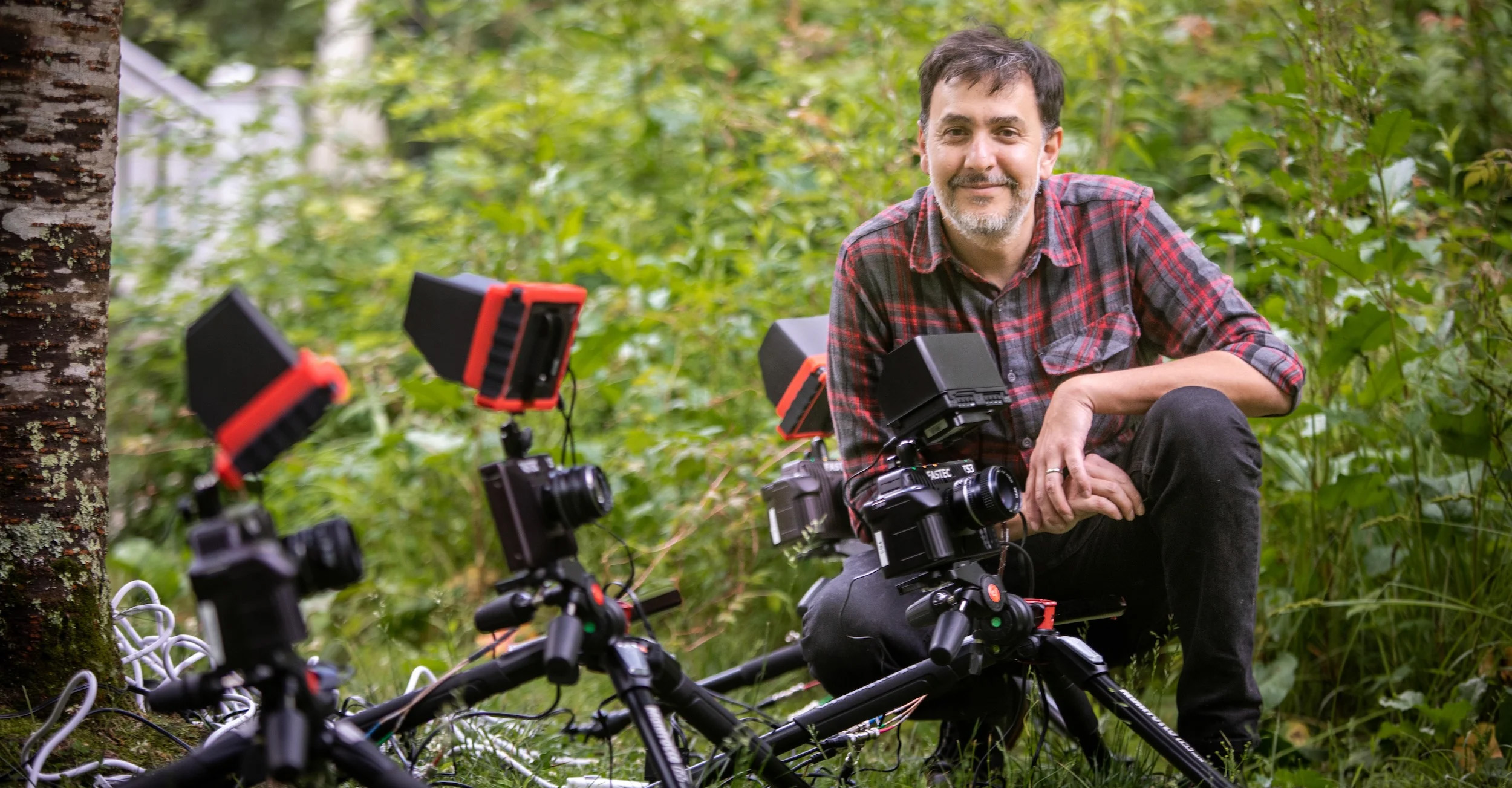
Pepe Iriarte-Diaz
Associate Professor of Biology
I am a functional morphologist interested in how animals can produce and control movement. Before joining Sewanee, I was an assistant professor at the University of Illinois at Chicago. I received my PhD from Brown University, where I studied the biomechanics of flight in bats, and then I did a postdoc at the University of Chicago working on the biomechanics of feeding in primates.
For more info, you can check either my CV or my Google Scholar page
Office: Spencer Hall 152
Lab: Woods Labs 111
email: jairiart@sewanee.edu
Phone: +1-931-598-1798
Current Students

Fülöp Erdélyi (C'29)
Fülöp is a Research Fellow student working on the mechanics of mastication in primates

Arianna Shirak (C'28)
Arianna is working on a project looking at how variations in skull and masticatory muscles in primates, affect stable biting positions, and how some groups opt for producing larger bite forces at a cost of decreased mechanical stability, which could potentially produce pathological conditions.
Past Students
- Will North
- MP Sims
- Thomas McMichael
- Madelyn Kenny
- Will Holzer
- Katie Davison
- Meredith Tjepkema
- McNeill Davis
- Riley Carswell
- Kabir Menon
- Kayla Antoine
- Hannah Fitzgerald (C'27)
- Amy Martin (C'25)
Videos
The videos below are a sample of the species and flight behaviors that we can observe around feeders.
Red-bellied Woodpecker
Two house finches approaching the feeder
Blue jay
Carolina Chickadee
Northern Cardinal
White-breasted Nuthatch
Software
Here you will find some apps that we have developed for our research to manipulate 3D models and to create virtual muscles.
These apps are available as a MATLAB app, which requires an active MATLAB license, but we also provide binary packages for Mac, Windows, and Linux, that run without MATLAB or a MATLAB license. Please note that these apps are beta versions, with many bugs. No documentation is available yet, but if you are interested in trying the apps and have questions about their use, feel free to contact me at jairiart@sewanee.edu
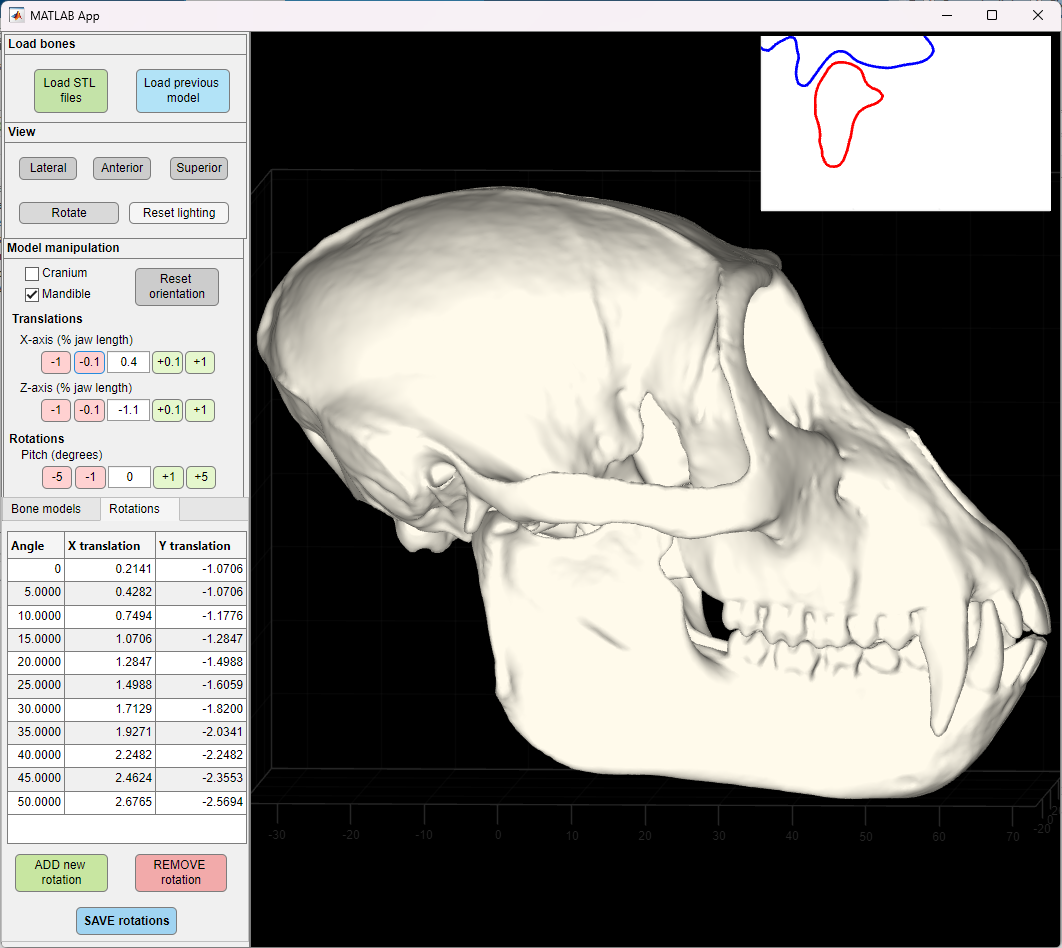
stlModelPreparation app
Interactive app to prepare the STL models for the cranium and mandible to use with the MuscleSelection app.
This app allows you to manipulate (rotate and translate) either the cranium, the mandible, or both.
Downloads
Current version: 2.0 (2024-11-07)

muscleSelection app
Interactive app to identify and visualize the jaw adductor muscles (masseter, temporalis, and medial pterygoid).
You just need the boneModels_*.mat file (that contains the 3D models) created from the stlModelPreparation app. Once the models are loaded, then you can manually identify the cranium and mandible attachments of the masticatory muscles.
Download
Current version: 2.4 (2024-11-07)
Links
Here are some sites of colleagues doing interesting work.
Primate feeding labs
Animal flight labs
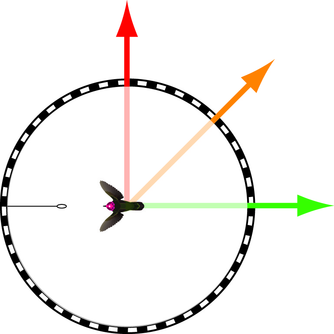
Altshuler Lab
University of British Columbia
Aerodynamics, physiology, and neural control in hummingbirds
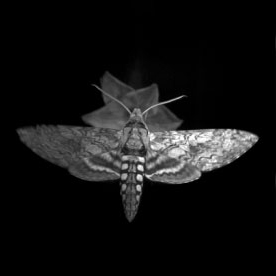
Hedrick Lab
University of Nort Carolina - Chapell Hill
Neural control and aerodynamics of animal flight
